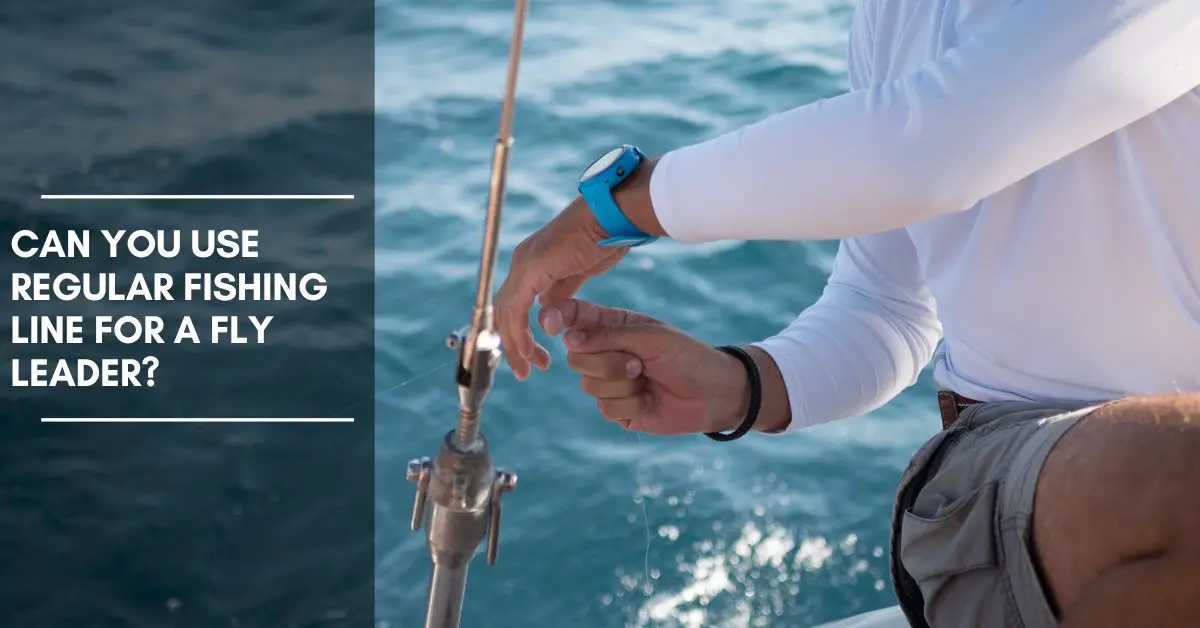As an angler, you might have wondered if it’s possible to use a regular fishing line for a fly leader. In this article, we’ll dive deep into the topic, discussing the pros and cons, the differences between fly leaders and regular fishing line, and providing some useful tips for making the most out of your fishing experience. Let’s start by briefly touching on the main points.
First, let me give you a short answer to this question – Yes, you can use a regular fishing line as a fly leader in a pinch, but it’s not recommended due to differences in materials, diameter, and other factors.
By the end of this article, you’ll have a clear understanding of why using the appropriate fly leader is essential for a successful fly fishing trip.
So, let’s dive into the world of fly fishing and explore the intricacies of fly leaders and fishing lines!
Understanding Fly Leaders and Regular Fishing Line
Fly Leaders: The Basics
Fly leaders play a crucial role in fly fishing, serving as the connection between your fly line and your fly. They are designed to be nearly invisible in water, allowing your fly to move naturally and entice fish to bite.
Material and Taper
Fly leaders are typically made from monofilament or fluorocarbon materials and are tapered, meaning they are thicker at the end attached to the fly line, and thinner towards the fly. This tapering helps with smooth energy transfer, improving casting accuracy and presentation.
Regular Fishing Line: What You Need to Know
Regular fishing line, on the other hand, comes in a few different types, each with its own set of properties and applications. These include monofilament, fluorocarbon, and braided lines.
Diameter and Stretch
One key difference between regular fishing lines and fly leaders is the diameter. Regular fishing line is generally thicker and has more stretch than fly leaders, which can affect casting and presentation in fly fishing.
Why Using Regular Fishing Line as a Fly Leader Isn’t Ideal
Less Efficient Casting and Presentation
Using a regular fishing line as a fly leader can result in less efficient casting and presentation. The thicker diameter and additional stretch can hinder energy transfer and may cause your fly to land with a splash, scaring away fish.
Visibility Issues
Regular fishing lines are typically more visible than fly leaders, which can deter fish from biting. Fly leaders are designed to be nearly invisible underwater, making them a better choice for a stealthy approach.
Knot Strength
Knot strength is another factor to consider. While you can tie knots with regular fishing line, they may not hold up as well as those tied with a proper fly leader, potentially resulting in lost fish.
Tips for Choosing the Right Fly Leader
Match the Leader to Your Fly Size
Select a leader with the appropriate thickness for the size of the fly you’re using. This will ensure a more natural presentation and better casting performance.
Consider the Water Conditions
In clear water, opt for a fluorocarbon leader for its low visibility. In murkier water, a monofilament leader should suffice.
Experiment with Length
Longer leaders are generally better for skittish fish, while shorter leaders can provide more control in windy conditions. Don’t be afraid to experiment with different lengths to find what works best for you.
Conclusion
While it’s possible to use regular fishing line as a fly leader in a pinch, it’s not ideal due to differences in materials, diameter, and other factors. To ensure a successful fly fishing experience, it’s best to use a proper fly leader designed
specifically for this purpose. By choosing the right fly leader, you’ll enjoy more efficient casting, improved presentation, and a higher likelihood of catching fish.
Now that you have a better understanding of the importance of using the appropriate fly leader, you can make informed decisions during your next fly-fishing trip.
FAQs
Q1: Can I use a braided fishing line as a fly leader?
A: It’s not recommended to use a braided fishing line as a fly leader due to its high visibility and lack of stretch. Fly leaders are designed to be nearly invisible and have specific properties for effective fly presentation.
Q2: Can I make my own fly leader?
A: Yes, you can make your own fly leader by tying sections of monofilament or fluorocarbon line together. This allows you to create a custom-tapered leader for your specific needs. However, it requires some knot-tying skills and knowledge of leader formulas.
Q3: How often should I replace my fly leader?
A: You should replace your fly leader when it becomes too short, or damaged, or when it no longer provides the necessary performance. The frequency of replacement depends on how often you fish and the conditions you encounter.
Q4: What is the difference between a fly leader and a tippet?
A: A fly leader is the section of the line that connects your fly line to your fly. The tippet is the thinnest and last section of the leader, to which the fly is attached. The tippet can be replaced separately, allowing you to extend the life of your leader.
Q5: What are some good brands of fly leaders?
A: Some popular brands for fly leaders include RIO, Orvis, Scientific Anglers, and Umpqua. It’s essential to choose a high-quality leader that suits your needs and preferences.


